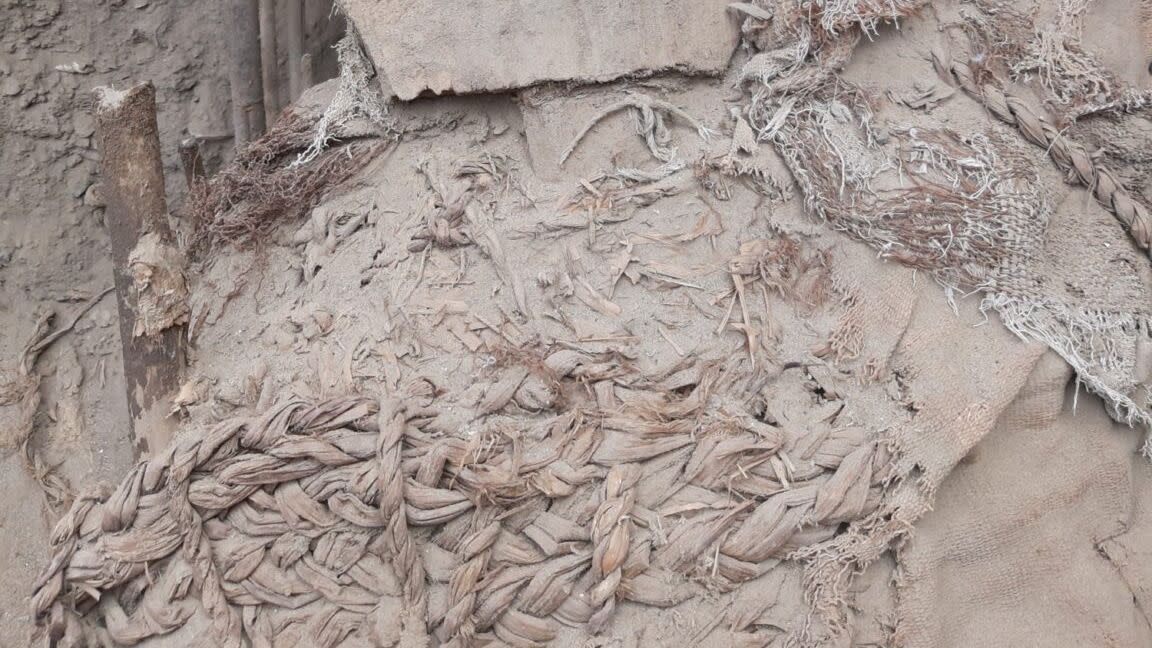73 Ancient Mummies, With False Heads, Have Emerged in Peru

An archaeological site near Lima, Peru has revealed 73 mummies from the Wari Empire—before the Incans grabbed control.
The mummies date back 1,000 years, and came wrapped in colorful rope and cloth.
Masks dubbed “false heads” were also found, made of both wood and ceramic.
Burial bundles located at the foot of the Painted Temple near Lima, Peru held a recent surprise for archaeologists. Seventy-three mummies in one location—all dating from around 800 to 1100 AD in a “spectacular” state of preservation—were the crown jewel of a site that also revealed carved “false head” masks and clues about the Wari Empire prior to the arrival of the Incans.
The find is credited to a team from the Pontifical Catholic University of Peru—led by professor Krzysztof Makowski—and documented on the Archeowiesci blog run by the Faculty of Archaeology of the University of Warsaw. What made the find particularly unique was that it came from a complex series of cemeteries (previously discovered at the end of the 19th century) that were not well preserved and had been heavily looted by grave robbers.
Discovering 73 intact burials below the Incan wall was certainly unexpected, and so was the fact they were so well preserved, with distinctive attributes that have given researchers more to dig into.
Each of the mummified bundles came wrapped in fabric and rope, some of which was quite colorful. The team also found “false heads”—masks made of carved wood and ceramics meant to give the deceased a life-like presence when moving to the “world of the ancestors.”
“The condition was that family members did their duty and prepared the deceased to continue living,” Makowski said in the blog post. “This duty to ensure the continuity of life after life to one’s immediate ancestors was taken very seriously.”
The team also discovered two staffs of carved wood decorated with images of two dignitaries, who were wearing headgear reminiscent of the nearby Tiwanaku kingdom. The staffs were found in a layer covered with fragments of spiny oyster shells that had likely been imported from what is now Ecuador. According to the blog, the wooden carvings on the staffs depicts two deities standing on a high pedestal.
Both the iconography and the shells display the Wari’s connection to areas to the north and south of their settlement. The team believes that by studying the site, they can challenge previously held beliefs that the Pachacámac site was solely a sacred city, and show that it had a unique character during the Wari Empire.
The team believes their findings indicate that between 800 and 1100 AD, Pachacámac was a more modest settlement with a ceremonial platform. This is in sharp contrast to highly religious place that the site is believed to have become under Incan rule. The team says in the blog that the new find is a “veritable goldmine of information on the social position of men, women, and children,” and that continued analysis of the remains will unearth further clues about Wari history.
You Might Also Like

